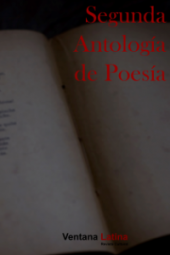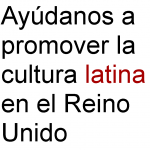Ten Questions with Photographer Alejandra Ugarte Bedwell
By Verónica Sanchis, translated by Ellen Donnison
We had the opportunity to interview the Mexican photographer, Alejandra Ugarte Bedwell, currently living and continuing her artistic practice in Denmark.
Alejandra Ugarte Bedwell was born in Mexico City in 1982. She has a MA in Advanced Photographic Studies from the International Centre of Photography, and studied the Plastic Arts at the ENPEG, ‘The Esmeralda’. Her work has been exhibited individually and collectively in Mexico, the United States, Denmark, England, Scotland and Germany. Her series Kilah was selected for the 25th Photographic Biennial of the Image Centre in 2012. Since 2003 she has collaborated on significant cinematographic projects, working as director of art and set designer. She was also a beneficiary of the scholarship, Young Creators, awarded by the National Fund for Culture and Arts, which she undertook in 2010-11. She participated in the International Fair of Artist’s Books for Photo September in 2009 and in the NY Art Book Fair in 2011. Her work has been published in Luna Córnea 29: Maravilla, Los Perros del Alba, Shift andNYPH New York Photo Awards Annual. She gained a René Peñaloza Prize for her teaching on Video and Photography and received honourable mentions at the National Competition of Photography at the Camera Club in New York and at the New York Photo Festival. In addition to working in her studio in New York she also works as a professor of photography, video and animation.
Ventana Latina: 1. What inspired you to become a photographer?
Alejandra Ugarte Bedwell: Photography is a medium that I have always found fascinating, which I began to explore through painting. Although it was always my intention to dedicate myself to painting, the way photography works and the time management that comes with it was better suited to the way I like to work. I consider photography to be similar to writing: its importance does not reside in knowing how to write or understanding the technical side of photography perfectly, it’s what you do with the words, or in this case, the images.
VL: 2. What are you trying to explore through your work?
AUB: I try to explore everything that I cannot describe or define, such as if it were possible to represent the way in which the body responds to a hit of adrenaline or the confusion that one suffers three seconds after waking up in a new or unknown place.
VL: 3. What is your experience with working with video?
AUB: I’ve spent a lot of time with it having worked in cinema as an artistic director. At first I didn’t consider video an option for me, given that it was often considered cinema’s ‘ugly brother’ and the level of production that I could use could not be compared with the projects that I collaborated on. But one way or the other, in every project I’ve done, I’ve always ended up making one or two video pieces, although I don’t show them at the end of the process. After leaving behind certain prejudices based around what ‘should’ be the image in movement, I can say that today, I feel most comfortable working with video.
VL: 4. Have you considered including portraits in you work?
AUB: The first series of photos I made were portraits, which is a form of art that fascinates me. However, I view my process as a liquid that adapts itself to its surroundings and what’s needed in that precise moment. It’s true that portraits don’t often feature in my work and maybe it’s because, in my opinion, approaching an idea can be more interesting through the use of metaphors. The portrait is immediately meant to focus one’s attention on the person that it presents, their expression and situation, but for me, what’s important is to talk about relationships and connections. To give an example, in projects such as 14.01.18.05.03.02.12.05.18.14, I posed the question: How do I talk about my relationship with my mother without portraying her? Therefore, the only images that physically represent her in the book based on my relationship with her are photographs of her hands: in one she holds a dog’s lead and the other shows her hand being operated on in the middle of a surgical procedure.
VL: 5. Why are you interested in recreating scenes? Such as ones you made for your books, After Grandma Bear and Finding Grandma Bear.
AUB: Memory is my major imaginative resource, however, it’s volatile and hard to grasp. From both Finding Grandma Bear and After Grandma Bear, sprung an excuse for me to get closer to my brother. This reconstructed an important history for both of us and created a bridge between his memories and mine, trying to overcome the imminent loss of memories which in that moment, contributed to who I am today.
VL: 6.Which theme have you developed most in your artistic work?
AUB: I would say the recurrent theme in my work is the relationships that I establish and the way that I try to navigate the world through them.
VL: 7. You have worked with objects and installations various times, how did you come to arrive at this method of working?
AUB: I was fortunate to have been educated in schools where they let us experiment with diverse techniques and workshops without having to choose an exclusive technique. As I mentioned before, if I think an idea can be elevated to a higher level and become clearer by being represented by a particular type of object, I allow myself to move between different mediums to achieve what I need to communicate in the best way possible.
VL: 8. Tell us a little about what your Bonsai work signifies.
AUB: The idea behind Bonsai was to replicate the process and dedication required for a practice such as the creation of a miniature tree. I used waste material and produced the pieces mainly for myself, and people I am close to. The manipulation of rubbish and what I produced from this was a way of assuming a practice of consumption that deteriorates and creates a simulation of ‘life’ within it.
VL: 9. How do your projects develop from the idea to the practice?
AUB: I always try to carry a workbook or a notebook with me so I can jot down ideas or realise images. I often have clear ideas for a piece but usually it’s only the idea that interests me and I ignore the final result. A fundamental part of the process is to write and look for references and inspiration around the idea. I suppose I could say that my projects blossom within the moment that I manage to organise all of those isolated notes and start working on them to give them forms.
VL: 10. Are you currently working on a new project?
AUB: Yes, actually it’s on a project that involves various portraits. Although, probably, the final result will be a book or an installation, I’m still open to seeing where the process will take me, but it’s about the imagination, the family and memory.
To see more of Alejandra Ugarte Bedwell’s work, click here






 Copyright © 2024 Company no. 6720498 10 Kingsgate Place, London NW6 4TA, United Kingdom Tel: 020 7372 8653
Copyright © 2024 Company no. 6720498 10 Kingsgate Place, London NW6 4TA, United Kingdom Tel: 020 7372 8653